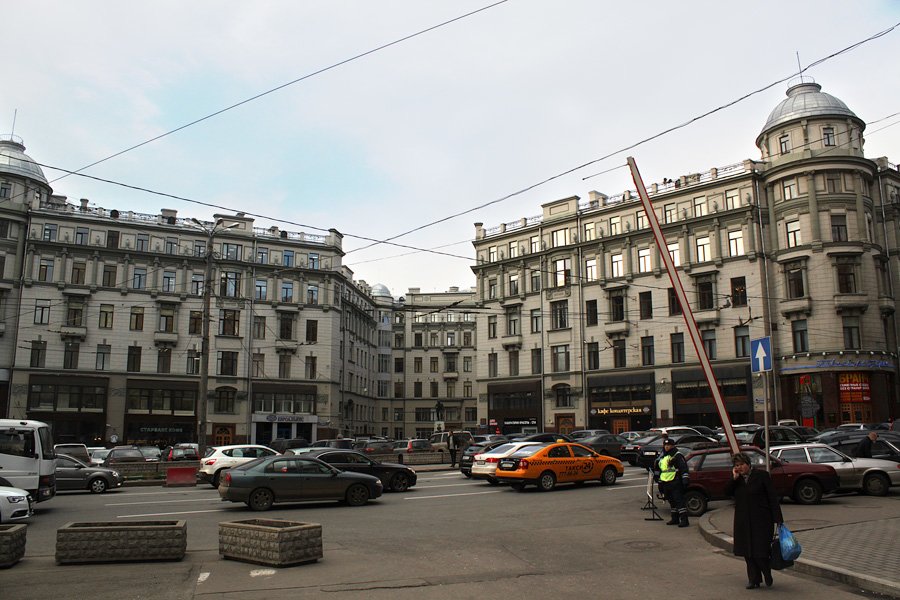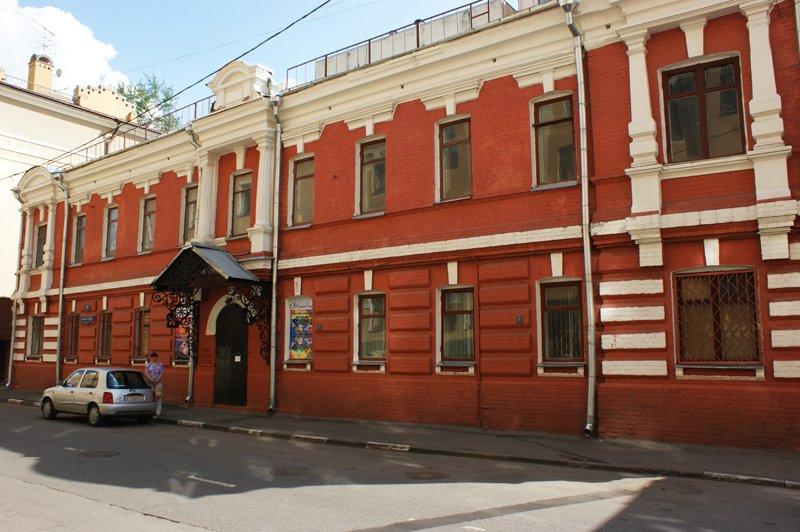На Лубянской площади со стороны ее пересечения с улицей Кузнецкий мост в доме 21/5 сразу за церковью Введения, впоследствии снесенной, располагался Народный Комиссариат Иностранных дел (НКИД) СССР, образованный в 1923 году. Он занял бывший доходный дом, до 1917 года принадлежавший Первому Российскому страховому обществу и построенный в 1905-1907 годах архитекторами Л.Н. Бенуа и А.И. Гунстом.
В начале XVIII века несколько больших участков на углу Введенской улицы (современного Кузнецкого Моста) и Сретенки (современной Большой Лубянки) принадлежали князьям Голицыным. Их обширный двор включал в себя двухэтажные каменные палаты и деревянные строения вокруг. В 1819-м владение перешло к богачу В.В. Варгину, монопольному поставщику заказов для российской армии. В его доме бывали поэт А.Ф. Мерзляков, братья Н.А. и К.А. Полевые.
В 1830 г. Варгин попал в опалу у военного министра А.И. Татищева, над его имениями установлена опека, которая была снята только в 1858 году, за год до смерти Василия Васильевича. Впоследствии владение перешло наследникам, в числе которых были М.И. Лясковская, жена профессора химии Московского университета Н.Э. Лясковского, и ее брат Н.И. Варгин, сотрудник Общества сельского хозяйства.
С середины XIX века в двухэтажном здании, фасадом выходившем на Кузнецкий мост, размещались многочисленные магазины: полотняной фабрики Мертваг, ювелирный Овчинникова, книжный рижского купца В. Дейбнера, антикварных и редких вещей А.А. Бо, первой в России фабрики гнутой буковой мебели Войцехова.
В начале 1900-х здесь жил художник-график И.Н. Павлов, получивший известность оригинальными станковыми ксилографиями и линогравюрами с изображениями архитектуры старой Москвы. В 1880-х здесь разместилось учрежденное Н.С. Мордвиновым и Л.И. Штиглицем Первое Российское страховое общество от огня, которое в 1903 году приобрело весь обширный участок за 1 млн 6 тыс. 518 руб. 56 коп и, спустя два года, выстроило большой шестиэтажный доходный дом в неоклассическом стиле.
В 1910-х в доме размещались фотография К.А. Фишера и Первый русский автомобильный клуб Москвы, с 1918 года до 1952-го - Народный комиссариат по иностранным делам (позднее МИД). Сюда осенью и зимой 1924/1925 года приходил в читальню Наркоминдела Б. Пастернак, работавший над составлением ленинианы. Материальное положение его семьи, в которой незадолго до этого родился сын, было очень тяжелым. Мысль о необходимости искать работу для постоянного заработка не оставляла Пастернака: «Без регулярного заработка мне слишком бы неспокойно жилось в обстановке, построенной сплошь, сверху донизу, по периферии всего государства в расчете на то, что все в нем служат…». С устройством на работу Пастернаку помог друг Я.З. Черняк. Он участвовал в составлении библиографии по Ленину, которую готовил к изданию под ред. Г. Владиславлева Институт Ленина при ЦК ВКП (б), организованный в 1923 г. Черняк уговорил тогда Пастернака взять на себя просмотр иностранной прессы о Ленине.
Своей сестре Жозефине Пастернак так рассказывал о своей работе: «…Мне приходится читать целыми комплектами лучшие из журналов, выходящие на трех языках. Ты даже не представляешь себе, как их много. Там подчас попадаются любопытные вещи. Я врежу себе, на них задерживаясь, так как я подряжен сдельно и вырабатываю пропорционально количеству и скорости требуемых от меня находок».
Ведомственная библиотека с читальней Наркоминдела помещалась в кв.12. В 1934 году в здании открылся Институт по подготовке дипломатических и консульских работников. На доме установлена мемориальная доска в память о Г.В. Чичерине (наркоме иностранных дел в 1918-1930 годах). После переезда МИДа на Смоленскую-Сенную в высотное здание, здесь размещался Московский городской совнархоз, а также различные министерства. Здание является ценным градоформирующим объектом.

Автор: Александр Иванов

Автор: pastvu.com

Автор: pastvu.com

Автор: pastvu.com

Автор: pastvu.com

Автор: Александр Иванов

Автор: Александр Иванов

Автор: Александр Иванов

Автор: Александр Иванов

Автор: Александр Иванов

Автор: Александр Иванов

Автор: Александр Иванов



%20BEL_0521.jpg&w=1920&q=75)







